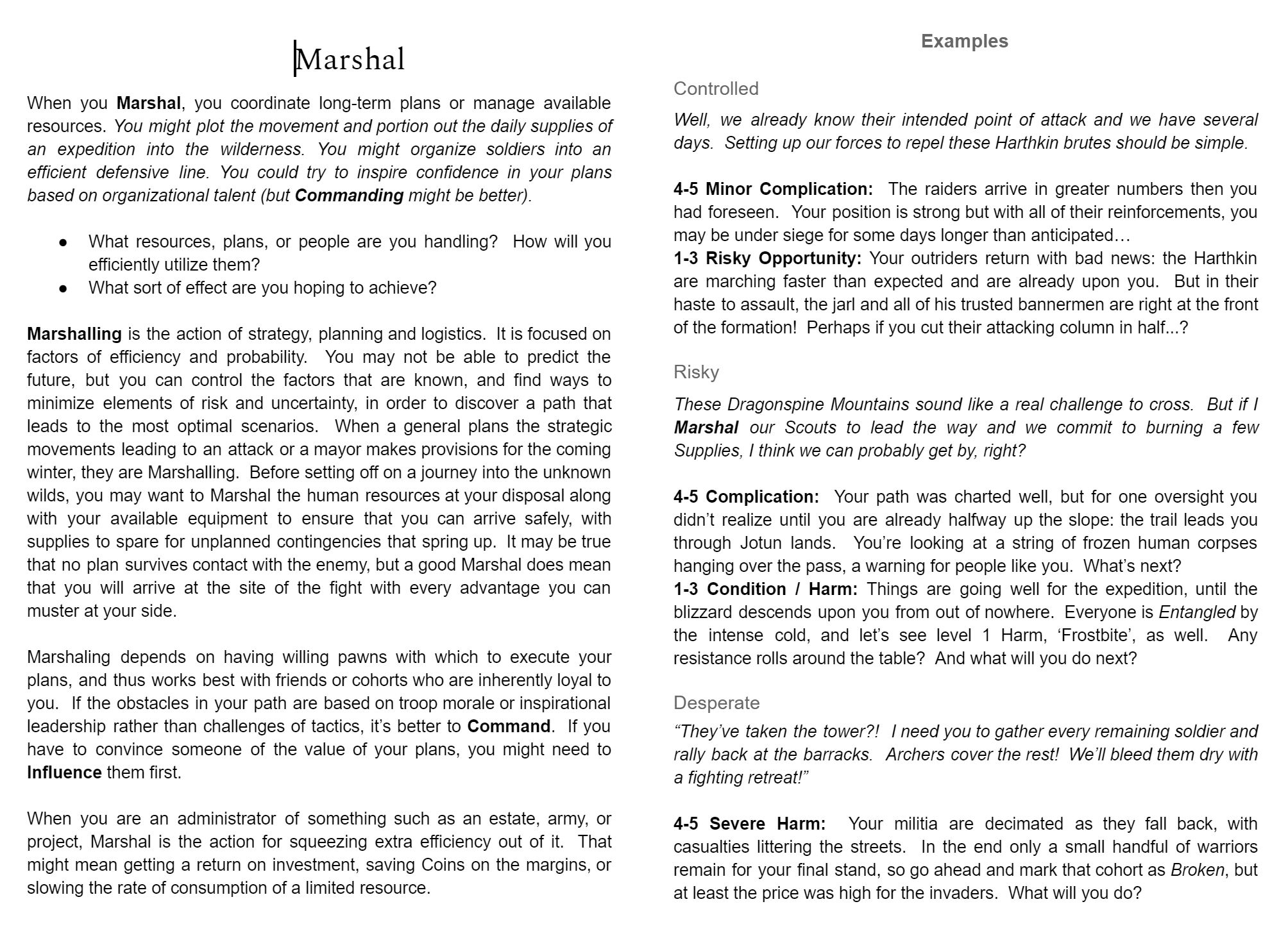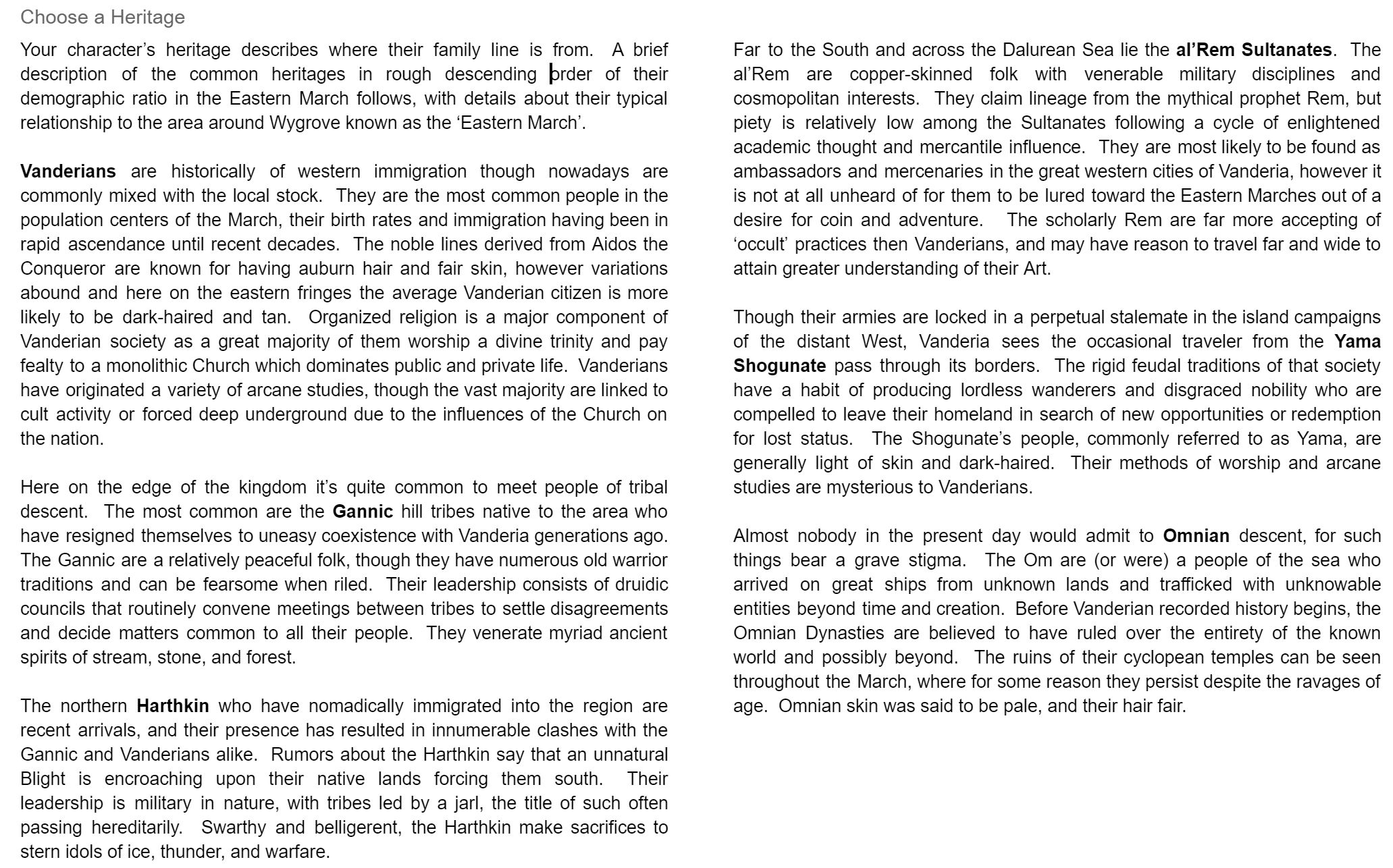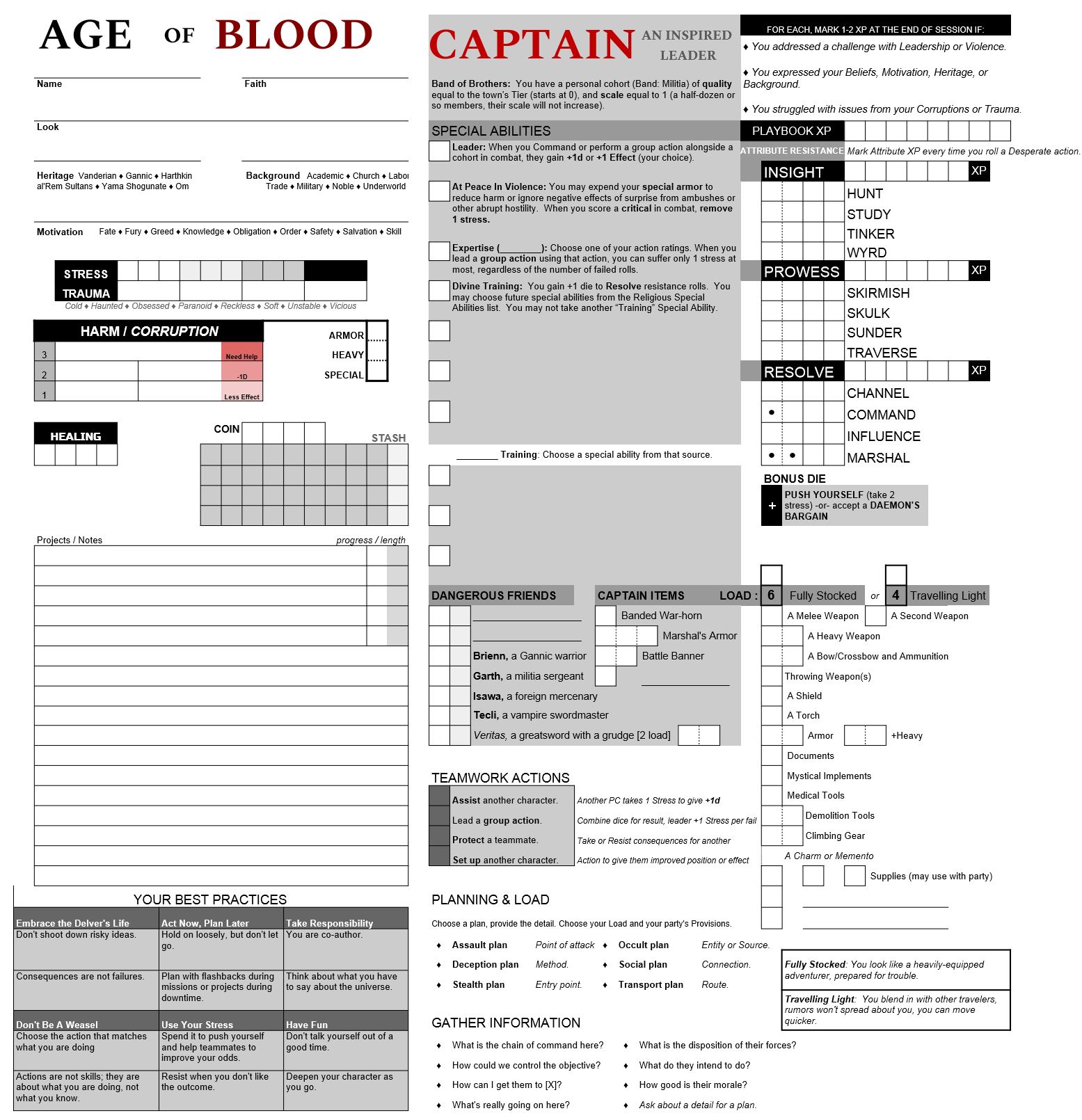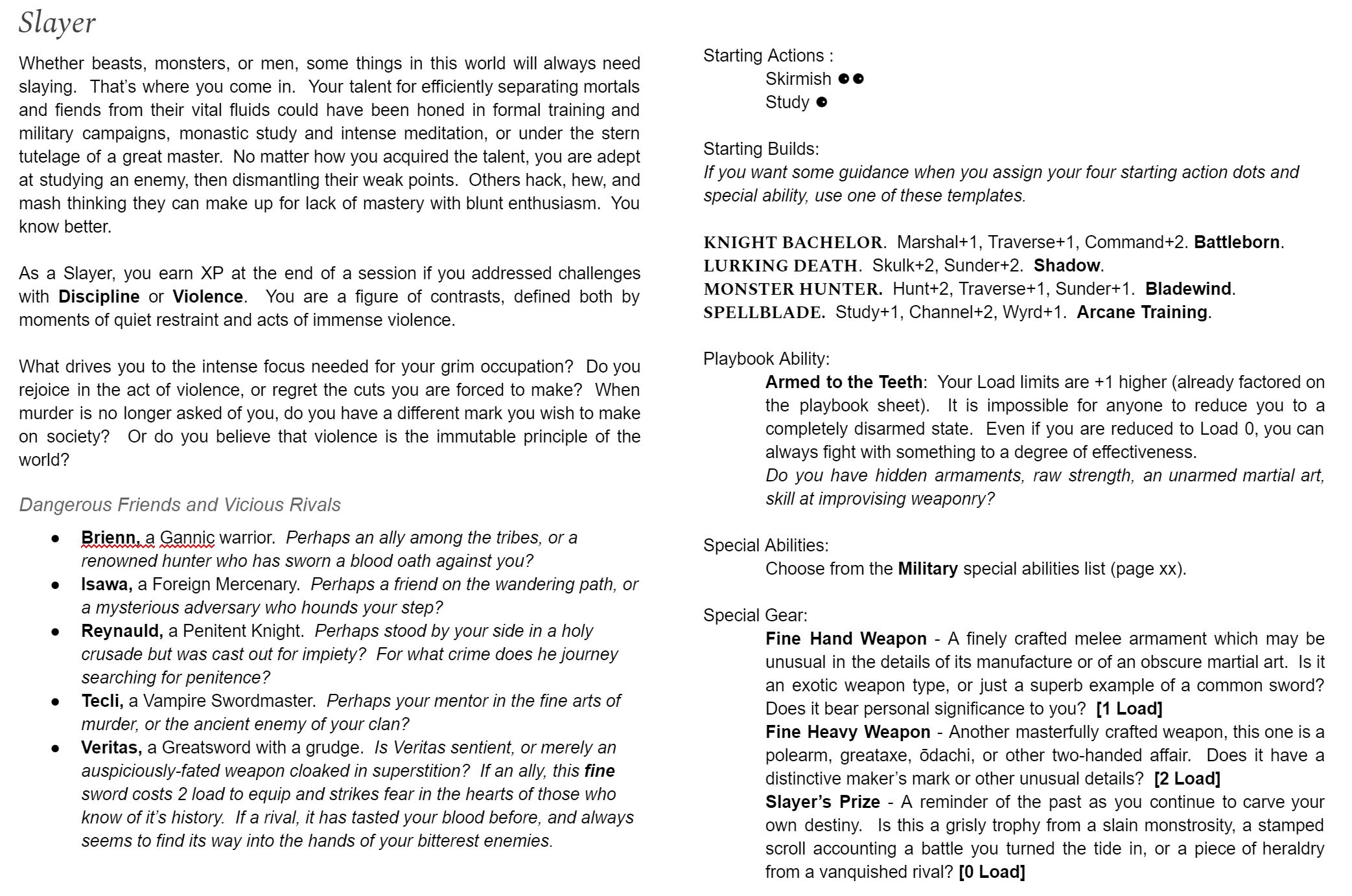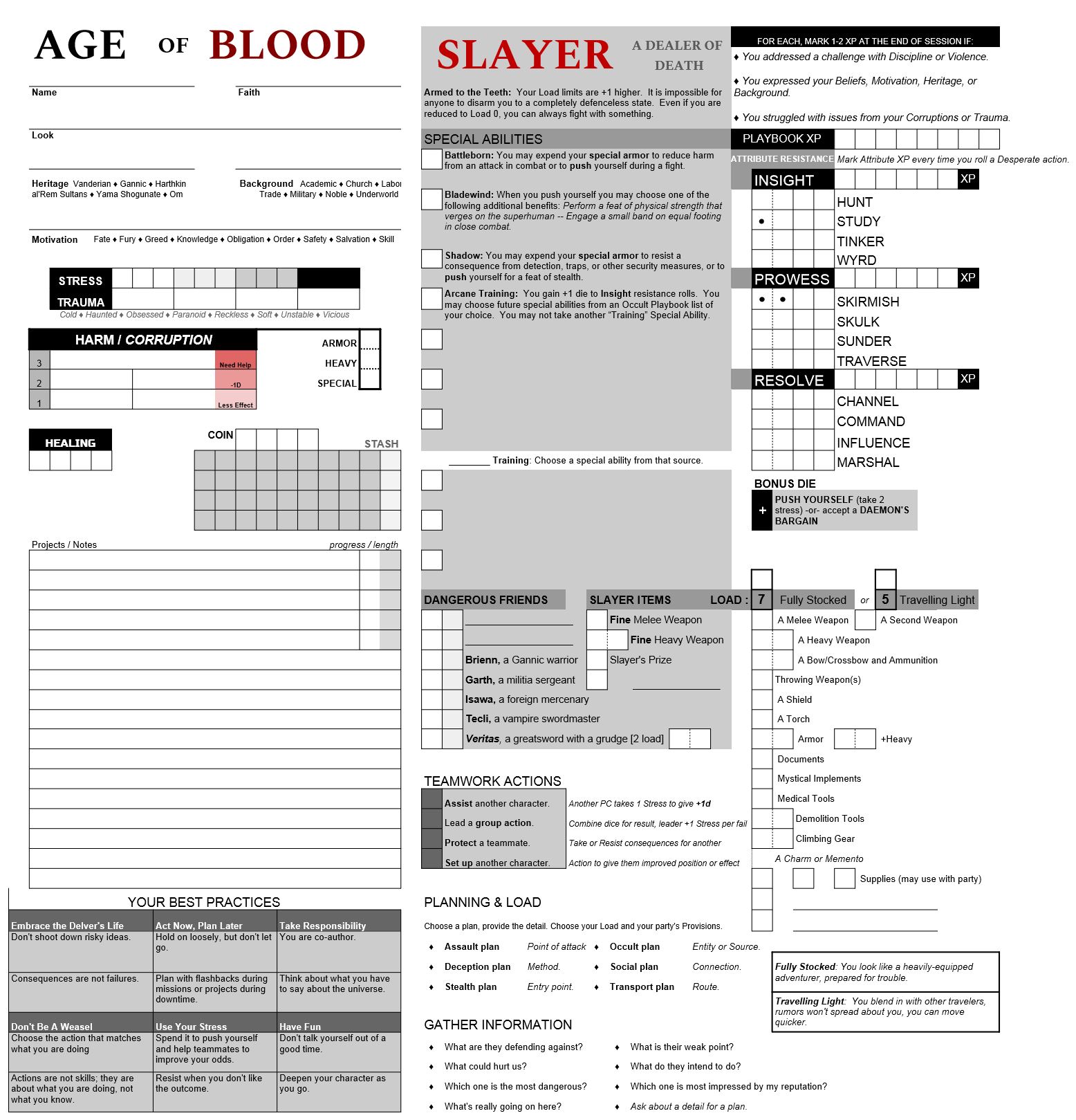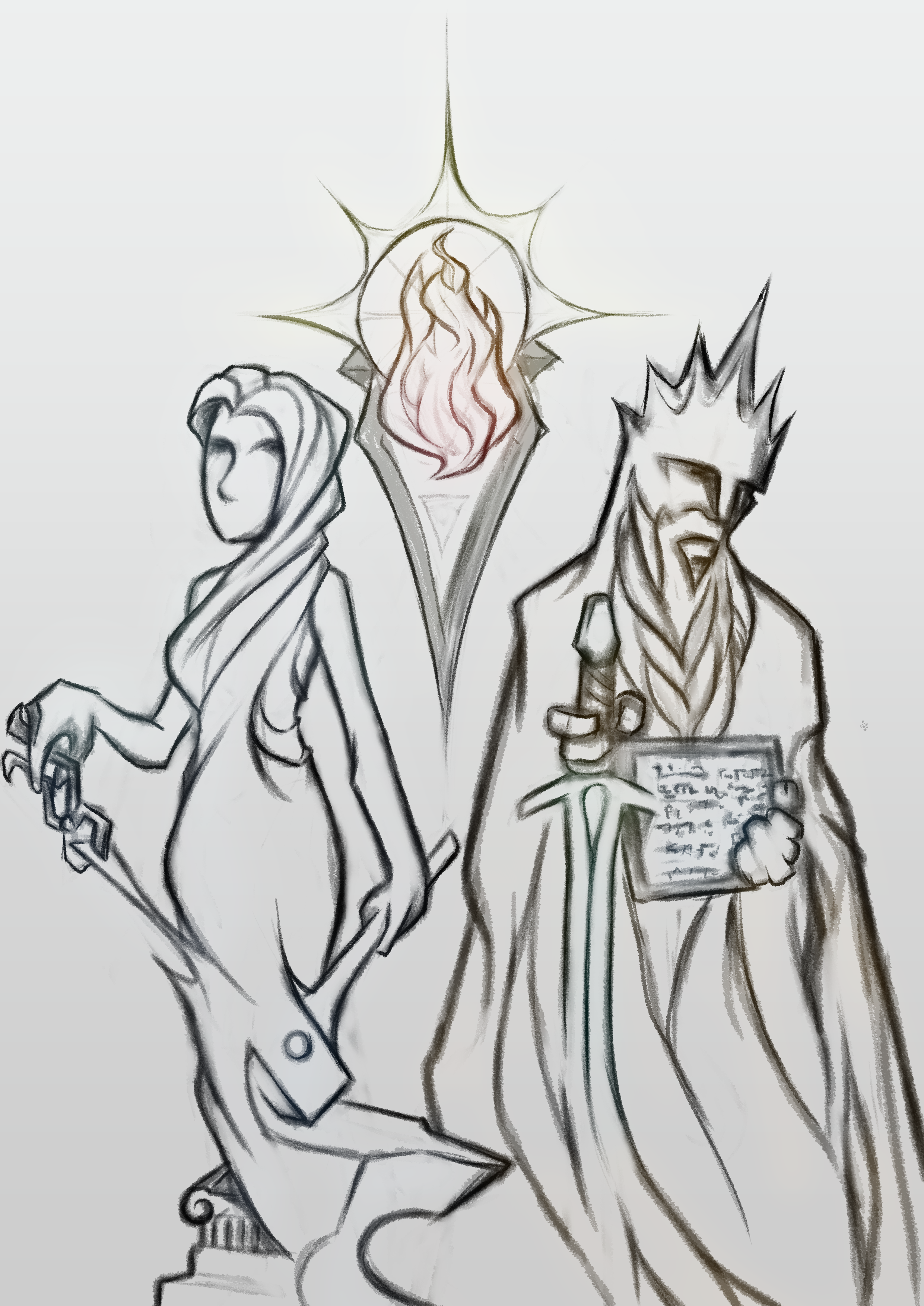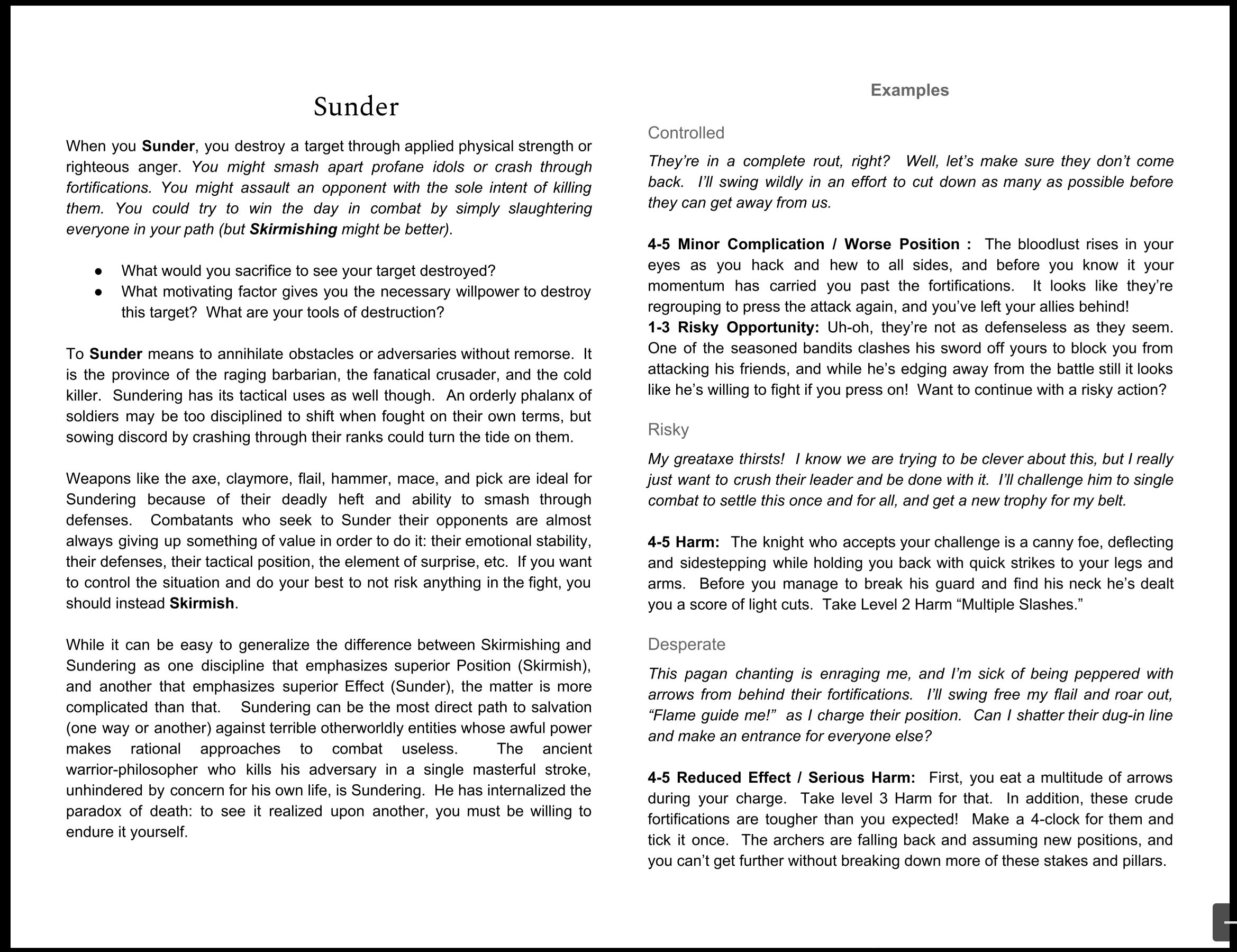Hi all! I’m hoping for some opinion and critiques on a system I’m working on.
Hi all! I’m hoping for some opinion and critiques on a system I’m working on.
This is in the context of (yet another!) dark fantasy Blades in the Dark hack. The sub-system at play here is ‘Conditions’. Here’s the current text below, which will be followed up by some design notes:
“Conditions are generally harmful circumstances (they can occasionally be beneficial) that befall the characters, but which are short of actual Harm. Some conditions may lead to Harm if they are not dealt with (for example, Burning or Acid) but they exist separate to the Harm track for PCs.
Why even have conditions? Pragmatically, they allow the GM to model a variety of dangerous repercussions from enemy action that do not simply translate to “Add a Level of Harm to your character’s sheet.” They help formalize a collection of circumstances that in Blades in the Dark would normally fall under various other umbrellas like Harm, Complications, or Worsening Position. Since Conditions are more transitory then Harm the PCs may be less compelled to throw Resistance rolls at them. All of this is important to Age of Blood because it gives the GM a way to slow down the otherwise frantic pace of adding up Harm and Stress from enemy consequences that the Players would otherwise incur, as well as helping to represent insidious foes whose threats go beyond mere bodily injury or mental fright.
When a character is suffering from a condition, one of their allies may wish to help, or they may devote an action to ridding themselves of it. Such actions typically fall under Tinker or Wyrd. A success on such action clears one or more conditions, while complications can include causing the helping actor to suffer the Condition they were clearing or making a target of themselves by lowering their guard for the sake of altruism.
A list of common conditions is below. Any condition can be applied along with the [Limited] tag, meaning that it only applies long enough to take full effect once before being removed automatically. It is possible that some terribly powerful adversaries may give [Locked] conditions, which cannot be removed outside of Downtime (they can still fade from a [Limited] tag native to the condition). Otherwise, all conditions last until Action is taken to remove them, or until the party finds a break in the action and is able to catch their breath and recuperate (allow them to clear any Conditions they were suffering from).
Burn / Acid / Bleed – When the afflicted character completes an entire Action Roll cycle while under this effect, roll 1d6. On a 1-2, they mark Level 1 Harm. Identical versions of these conditions cannot normally be stacked. If [Limited], these conditions persist until they roll a 1-2 for the first time.
Despair – The afflicted character is suffering from a supernatural sense of dread and has their mental defenses lowered. They take -1 die to any Resolve Resistance rolls.
Slowed – The afflicted character is tripped up, hamstrung, or chilled and has difficulty changing position on the battlefield. If using the Terrain optional rules, they may not relocate to another Zone unless they forgo taking an Action when it is their opportunity.
Entangled – The afflicted character’s limbs are restrained or frozen in place. They are Slowed for the duration of this condition, and also take -1 die to any Prowess Resistance rolls.
Blinded – The afflicted character has difficulty perceiving their environment. They reduce any Action rolls they take by 1 die. This can combine with Harm penalties!
Dazed – The afflicted character has difficulty bringing their faculties to bear. They take -1 die to All Resistance rolls.
Weakened – The afflicted character is unable to put their full weight behind their actions. They suffer -1 Effect on their Action rolls. This can combine with Harm penalties!
Cursed – The afflicted character has been hexed by a malign force or is suffering judgement from a wrathful deity. After they perform an Action roll, the GM may choose any 1 die they rolled and turn it to the opposite face (a 6 becomes a 1, a 5 becomes a 2, and a 4 becomes a 3). This condition is always [Limited], fading after it is invoked.
Stunned – The afflicted character cannot do anything the next time they would have an opportunity to act. This condition is always [Limited]. At the GM’s discretion, when the [Limited] effect triggers to remove Stunned, one adversary in a suitable position also inflicts a Consequence on the character (they may Resist or be Protected by an ally as normal).
Blessed – The character has been booned by friendly spirits or is a conduit for a benevolent deity. After they perform an Action roll, the Player may choose any 1 die they rolled and turn it to the opposite face (a 1 becomes a 6, a 2 becomes a 5, and a 3 becomes a 4). This condition is always [Limited], fading after it is invoked.
Empowered – The character has been strengthened by an invigorating surge. They gain +1 Effect to their actions.”
As you can see, the list of Conditions got somewhat inflated and I may try to chop back some of the more redundant types. The justification of the system is to slow down the Harm Spiral of BitD while also giving some useful texture/flavor to different enemy types (this is a combat-heavy hack).
As my hack text above alludes to, you could very easily just work within the existing Consequence framework to do a lot of this stuff, in particular Consequence Clocks and the trusty “Worse Position” repercussion. However with Position that’s not a very granular dial to turn (there are only 3 positions after all) and I want to cut down some of the mechanical reliance on Clocks (I already have a Clock sub-system that emphasizes tracking of environmental factors and enemy patrols/reinforcements).
Much like the unique game-state of being ‘knocked down’ in Street Fighter, the idea is to create a transitory handicap state that emphasizes wrestling with hard decisions on the part of the players. Thoughts and Critiques?
